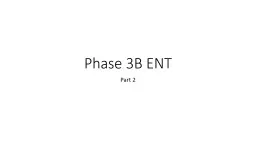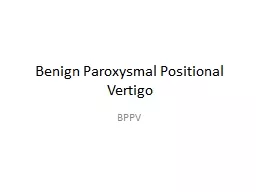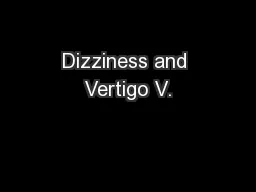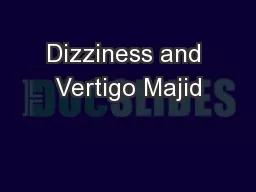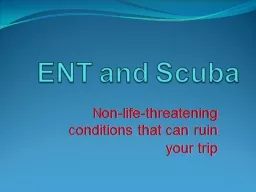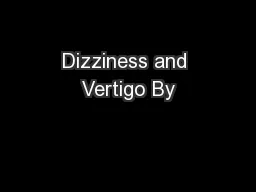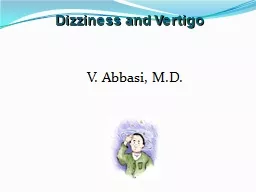PPT-Phase 3B ENT Part 2 EARS: VERTIGO
Author : cheryl-pisano | Published Date : 2020-04-02
Illusion of movement dizziness Peripheral BPPV Menieres Disease Labyrinthitis Vestibular Neuritis Causes Central Acoustic Neuroma Multiple Sclerosis Head Injury
Presentation Embed Code
Download Presentation
Download Presentation The PPT/PDF document " Phase 3B ENT Part 2 EARS: VERTIGO" is the property of its rightful owner. Permission is granted to download and print the materials on this website for personal, non-commercial use only, and to display it on your personal computer provided you do not modify the materials and that you retain all copyright notices contained in the materials. By downloading content from our website, you accept the terms of this agreement.
Phase 3B ENT Part 2 EARS: VERTIGO: Transcript
Download Rules Of Document
" Phase 3B ENT Part 2 EARS: VERTIGO"The content belongs to its owner. You may download and print it for personal use, without modification, and keep all copyright notices. By downloading, you agree to these terms.
Related Documents

